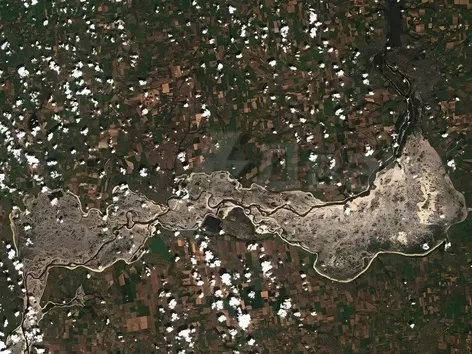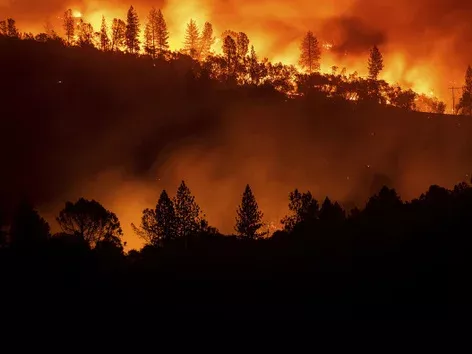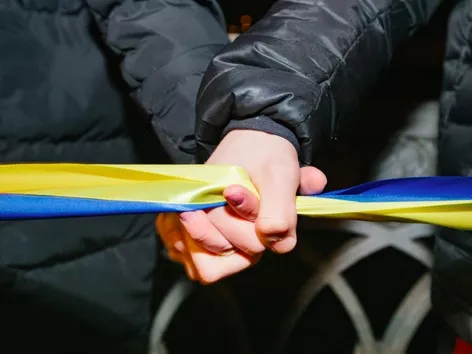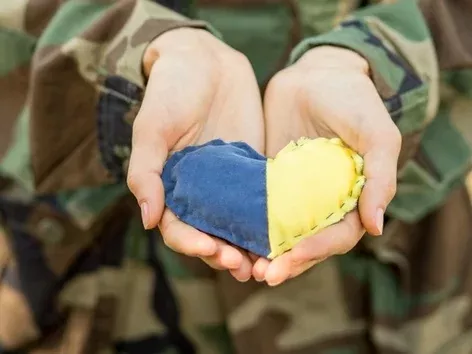Treasures at the bottom of the Kakhovka Reservoir: What are black archaeologists looking for?

The terrorist attack on the Kakhovka Dam caused the reservoir to dry up, which led to a sharp increase in the number of diggers stealing archaeological sites. Find out what the bottom of the Kakhovka reservoir hides and what black archaeologists are hunting for
The shallowing of the Kakhovka Reservoir as a result of a russian terrorist attack on the dam has had serious environmental, economic, and technological consequences. In addition, the drying up of the reservoir has attracted the attention of black archaeologists, as these territories are home to many historical and cultural monuments of Ukraine.
On the occasion of the Ukrainian Archaeologist's Day, we will tell you what the lands of Kherson and Zaporizhzhia regions hide and what objects the diggers are hunting for in the article below.
Why is the Kakhovka Reservoir popular among black archaeologists?
The construction of the Kakhovka HPP led to the flooding of a unique natural area, the Velykyi Luh, which was a network of islands, bays, and rivers. According to historians, this was a kind of umbilical cord of the Ukrainian Cossacks, as five Zaporizhzhia Sichs existed here at different times - Tomakivska, Bazavlutska, Mykytynska, Chortomlytska, and Nova or Pidpilnenska Sich. In addition, the soils of the Velykyi Luh were incredibly rich and fertile, and therefore different peoples lived here: Slavs, Byzantines, Scythians, Greeks, and others.
One of the most striking examples of finds in this region is the world-famous Scythian Golden Pectoral. It was found at the Tovste Grave, not far from the reservoir. Read more about why the world is still fighting for Scythian gold here.
It is also important that the ancient archaeological treasures have been kept under reliable protection all this time. Under the waters of the Kakhovka Reservoir, sunlight and air did not reach them, and thus they were "preserved in the ground."
Excavations on the territory of the shallow reservoir can open up a whole chapter of Ukrainian history for Ukraine, in particular, to show the life, customs, and culture of the Cossacks. However, these should be government-organized events involving special equipment, technologies, and specialists. Unfortunately, it is impossible to do this during the war.
Another problem is that the water has severely eroded the soil and washed valuable monuments to the surface, making unique objects vulnerable to external factors. In addition, easy access leads to a high level of crime in these areas, and valuable artifacts are looted by black archaeologists.
Visit Ukraine on social media: Telegram | YouTube | Instagram | Facebook | Twitter | TikTok
What archaeological treasures does the bottom of the Kakhovka Reservoir hide?
The territory of the shallow reservoir potentially contains a very large number of valuable things. In particular, Cossack ships, weapons and household items, jewelry and ceramics, Greek amphorae, etc. In addition, there are many ancient settlements and burial grounds on the territory of the dried-up reservoir.
Several important finds have already been reported. In particular, as reported by Nikopolnews, the remains of the Pokrovske Sich Church, which Oleksandr Dovzhenko once wrote about, were found on the site of the reservoir:
"In the village of Pokrovske, I regretted that there was no God. I wished terribly that he would appear for at least five minutes and, seeing the ancient architectural monument, built in honor of his mother, destroyed by villains, punish the dark and vile Judas who committed this vile deed with a fierce death."
According to Larysa Sadovska, director of the Pokrovske village museum, the site of the discovery was home to the New (Pidpilnenska) Cossack Sich in 1734-1775, which was later destroyed by order of Catherine II. The wooden church was heavily damaged, but a new, stone building was built to replace the shaky structure. It existed until the area was flooded during the construction of the hydroelectric power plant.
In addition, three large boats of the Cossack era were found near the shores of Khortytsia. As explained by TSN, one of them is a river vessel of the XVI-XVIII centuries, on which Zaporizhzhia Cossacks transported goods along the Dnipro. Also, unique silver coins minted in 141 AD were found in Zaporizhzhia region.
In the territories controlled by Ukraine, archaeologists are trying to explore the coastal zone to identify and save monuments. However, full-fledged excavations are not possible either on land or in the shallow areas until the end of the hostilities in Ukraine. Therefore, experts record findings and try to protect the territory from black archaeologists, but unfortunately, a significant part of Velykyi Luh is under occupation and on the front line, so it is not yet possible to save the historical and cultural heritage of the state.
We remind you! Despite the full-scale war, foreigners continue to come to Ukraine. We talked to our foreign tourists who visited Ukraine during the war and found out what motivates them to travel to Ukraine in wartime, which cities they choose to visit, and what they remember and are most impressed by. Read the answers to all these questions in the interview here.
Photo: Astra
You may be interested in:
Visit Ukraine Donation - make a good deed and an important contribution to the Victory of Ukraine;
Visit Ukraine Legal advice - comprehensive legal support on entry to Ukraine;
Visit Ukraine Tours - the largest online database of tours to Ukraine for every taste;
Visit Ukraine Merch - choose patriotic clothing and accessories with worldwide delivery;
Visit Ukraine News - get the latest news and updates in our Telegram channel;
Cooperation - cooperation and advertising integrations with Visit Ukraine and Visit World projects.
Recommended articles
3 min
War
The US Department of Defense has described the tactics of the Ukrainian offensive as a miracle, while ISW reports significant successes in certain parts of the frontline. Find out why the Ukrainian army has once again shocked the West and how the Ukrainian counteroffensive is progressing
14 Aug. 2023
More details2 min
Travel
Forest fires in Europe can really affect the tourism industry. Find out how intense natural disasters affect the tourism situation in popular EU countries
14 Aug. 2023
More details2 min
Events
Human chain of unity on Ukraine's Independence Day in different countries: how to join in
On August 24, the day of the 32nd anniversary of Ukraine's Independence, Ukrainians and citizens of other countries are encouraged to take to the central streets of their cities and hold hands. Find out how to join the Free World Gathering initiative in your country of residence
15 Aug. 2023
More details1 min
Way to Victory
Supporting the army with donations during the war is crucial to ensure its operations and support for Ukraine's defenders. Find out how to support our heroes
15 Aug. 2023
More details

